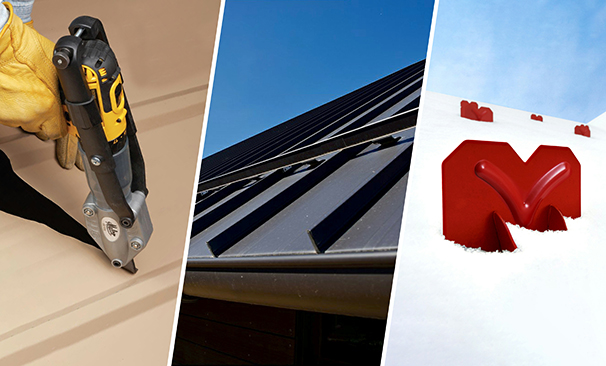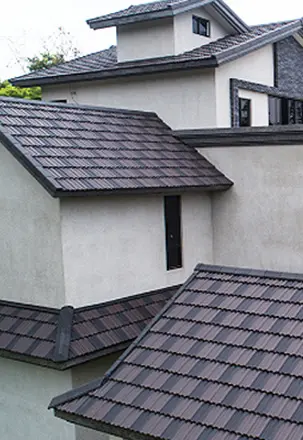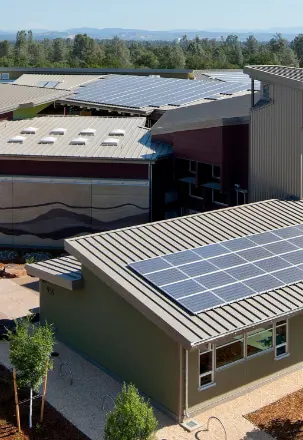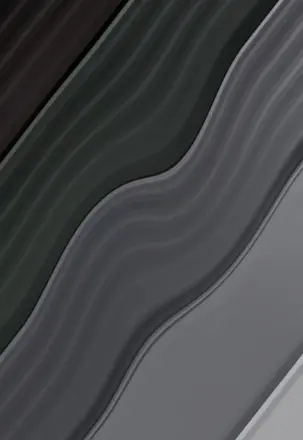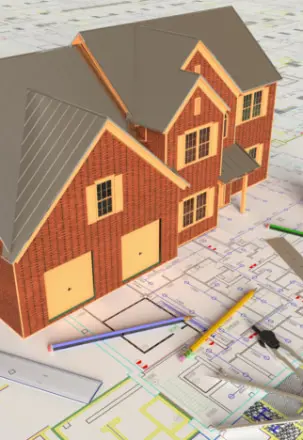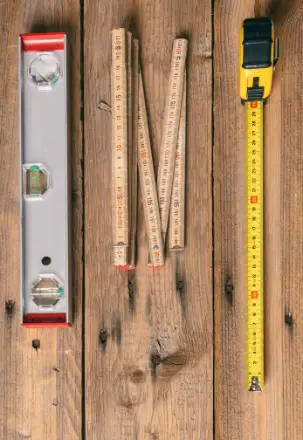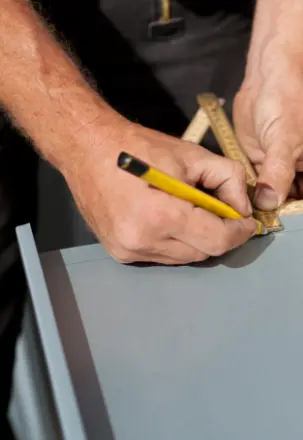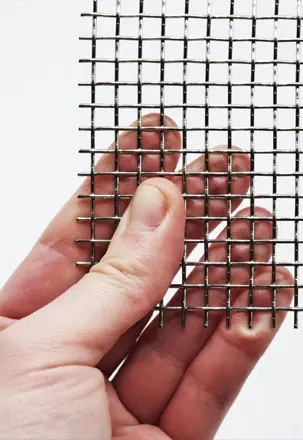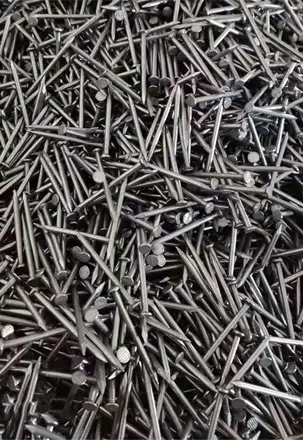In the modern roofing materials market, stone-coated metal roof tiles have emerged as one of the most innovative and durable solutions for both residential and commercial buildings. Combining the strength of steel with the beauty of traditional roofing materials such as clay, slate, or asphalt shingles, stone-coated metal tiles offer superior performance, longevity, and aesthetics.
As the demand for eco-friendly, weather-resistant, and long-lasting roofing continues to grow across global markets, stone-coated metal roof tiles are quickly becoming the top choice for builders, homeowners, and contractors. In this article, we will explore in detail what stone-coated metal roof tiles are, their composition, benefits, manufacturing process, applications, and global market trends.
What Are Stone Coated Metal Roof Tiles?
Stone-coated metal roof tiles are high-performance roofing materials made from galvanized or galvalume steel sheets that are coated with colored stone granules using an advanced adhesive process. The structure typically consists of multiple layers, each designed to enhance the durability, corrosion resistance, and visual appeal of the tile.
Unlike traditional metal roofs that may appear plain or industrial, stone-coated tiles mimic the look of classic roofing materials—such as clay tiles, wood shakes, or asphalt shingles—while maintaining the strength and lightweight benefits of steel.
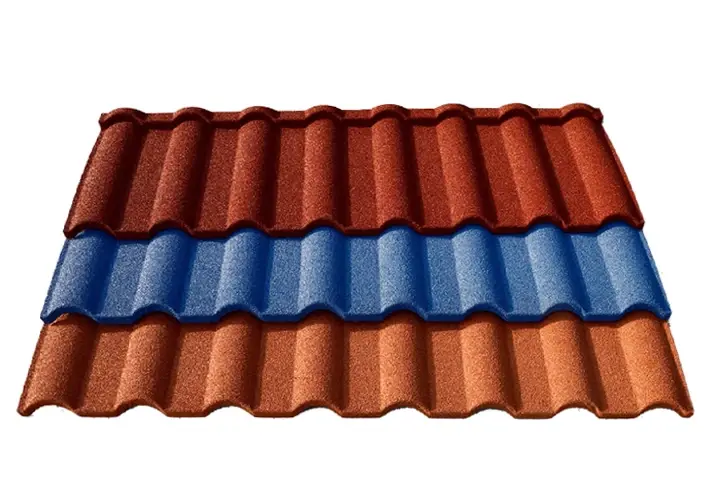
Structure and Composition of Stone Coated Metal Roof Tiles
A typical stone-coated metal roof tile includes the following layers:
1.Base Layer – Steel Core
- Usually made from galvanized steel (GI) or galvalume steel (GL).
- The thickness commonly ranges between 0.4mm to 0.6mm.
- Provides the tile’s main structural strength and resistance to impact and deformation.
2.Aluminum-Zinc Coating Layer
- Protects the steel base from corrosion and rust.
- The combination of aluminum and zinc improves the lifespan of the metal sheet significantly—up to three times longer than regular galvanized steel.
3.Acrylic Resin Layer
- Acts as an adhesive to bind the stone granules onto the surface.
- Enhances water resistance and prevents peeling.
4.Stone Granules Layer
- Made from natural basalt or ceramic-coated stone chips.
- Available in a wide variety of colors and textures.
- Provides UV protection and adds aesthetic appeal.
5.Top Clear Coating
- Seals the stone chips to prevent fading and enhance durability.
- Helps the roof retain its vibrant color for many years.
This multi-layer construction makes the stone-coated metal tile not only beautiful and lightweight but also extremely durable and weather-resistant.
Main Types of Stone Coated Metal Roof Tiles
Stone-coated metal roof tiles come in a range of styles to match different architectural preferences. The most common types include:
1.Classic Tile
- Designed to resemble traditional clay roof tiles.
- Features a gentle wave pattern.
- Popular for Mediterranean-style and residential projects.
2.Roman Tile
- Features a high curve and deep wave pattern for a luxurious look.
- Often used in villas, resorts, and high-end homes.
3.Shake Tile
- Mimics the natural look of wooden shingles.
- Ideal for rustic or country-style architecture.
4.Shingle Tile
- Flat and uniform appearance resembling asphalt shingles.
- Commonly used in modern and commercial buildings.
5.Bond Tile
- Features a distinct wavy pattern with strong interlocking edges.
- Provides excellent wind resistance and easy installation.
Each design offers unique aesthetic characteristics while maintaining the same superior strength and protective features of stone-coated steel.
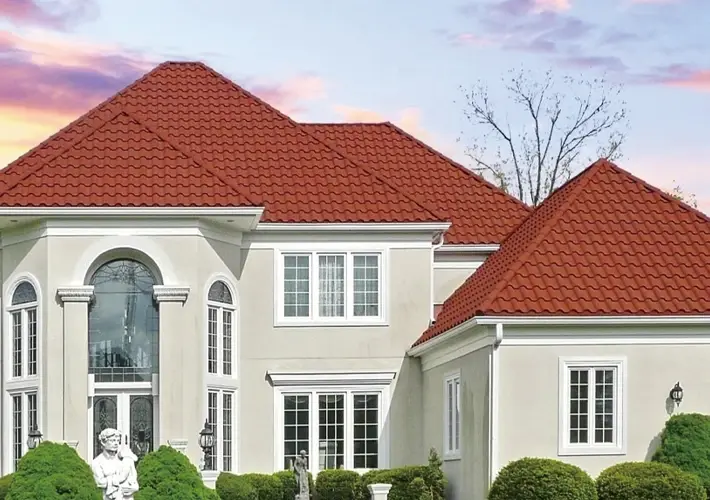
Advantages of Stone Coated Metal Roof Tiles
Stone-coated metal roof tiles combine functionality, beauty, and performance. Below are their most significant advantages:
1.Durability and Long Lifespan
- Can last 40–70 years, far exceeding traditional asphalt or clay roofs.
- Resistant to rust, corrosion, cracking, and fading.
2.Weather Resistance
- Withstands harsh conditions such as heavy rain, strong wind, hail, and extreme temperature fluctuations.
- Some models can resist wind speeds up to 120 mph and hail impact of up to 50mm.
3.Lightweight
- Weighs only 6–7 kg/m², much lighter than clay or concrete tiles (which can weigh 40–60 kg/m²).
- Reduces structural load on the building and transportation costs.
4.Energy Efficiency
- The stone granule coating reflects sunlight, reducing heat absorption.
- Helps maintain cooler indoor temperatures and lower air-conditioning costs.
5.Fire and Sound Insulation
- Non-combustible steel core provides excellent fire resistance.
- Stone coating and air gap reduce outside noise, creating a quieter indoor environment.
6.Aesthetic Versatility
- Available in various colors, patterns, and surface textures.
- Matches both modern and traditional architectural designs.
7.Low Maintenance
- Requires minimal cleaning and upkeep compared with clay or asphalt roofing.
- Resistant to mold, algae, and moss growth.
8.Eco-Friendly
- 100% recyclable steel material.
- Long lifespan reduces waste generation.
- Many manufacturers use water-based adhesives and non-toxic coatings.
Manufacturing Process of Stone Coated Metal Roof Tiles
The production of stone-coated metal roof tiles involves several key steps to ensure quality and consistency:
Step 1: Steel Sheet Preparation
- Steel coils (galvalume or galvanized) are uncoiled and cut to specific sizes.
- The surface is cleaned to remove dust and oil.
Step 2: Coating Process
- The steel sheet is coated with an aluminum-zinc protective layer.
- Then, an acrylic base coating is applied to enhance adhesion.
Step 3: Stone Granule Application
- Natural or ceramic stone granules are sprayed evenly onto the coated sheet.
- The sheet passes through a high-temperature oven to bond the granules firmly.
Step 4: Curing and Cooling
- Tiles are baked at high temperatures to solidify the coating.
- The material is cooled to room temperature for stability.
Step 5: Cutting and Molding
- Sheets are cut into standard sizes (e.g., 1340mm × 420mm).
- Formed into different profiles (classic, bond, shake, etc.) using hydraulic presses.
Step 6: Surface Protection
- A final transparent acrylic layer is applied for UV and color protection.
Step 7: Quality Inspection and Packaging
- Every tile undergoes strict testing for adhesion, corrosion resistance, and appearance.
- Packaged securely for export or domestic use.
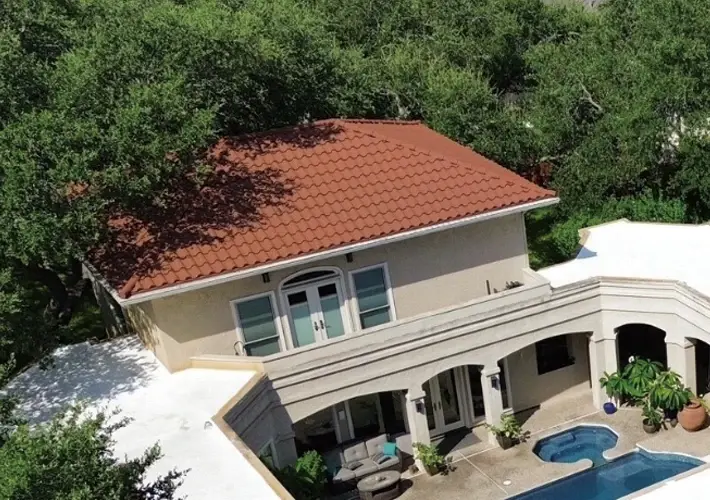
Applications of Stone Coated Metal Roof Tiles
Stone-coated metal roof tiles are widely used across residential, commercial, and public buildings due to their versatility and performance.
1.Residential Roofing
- Villas, bungalows, and private houses.
- Perfect for homeowners seeking aesthetic appeal and long-lasting protection.
2.Commercial Buildings
- Offices, shopping malls, and hotels.
- Offers a modern and elegant roof finish.
3.Public Infrastructure
- Schools, churches, hospitals, and government buildings.
- Durability ensures long-term value with minimal maintenance.
4.Coastal and Tropical Areas
- Ideal for humid or salty environments due to anti-corrosion coating.
- Provides excellent resistance to typhoons and heavy rains.
5.Renovation and Replacement Projects
- Lightweight property allows installation over existing roofs without removing old materials.
Comparison with Traditional Roofing Materials
| Feature | Stone-Coated Metal Roof | Clay Tile | Asphalt Shingle | Concrete Tile |
|---|---|---|---|---|
| Weight | Light (6–7 kg/m²) | Heavy (40–60 kg/m²) | Medium | Heavy |
| Lifespan | 40–70 years | 20–30 years | 10–20 years | 30–40 years |
| Maintenance | Very Low | High | Medium | High |
| Fire Resistance | Excellent | Medium | Poor | Excellent |
| Weather Resistance | Excellent | Moderate | Poor | Good |
| Aesthetic Variety | High | Limited | Medium | Medium |
| Installation Cost | Moderate | High | Low | High |
| Eco-friendliness | Recyclable | Natural but brittle | Not eco-friendly | Heavy and energy-intensive |
From this comparison, it’s clear that stone-coated metal tiles offer the best balance between performance, cost, and longevity, making them the preferred choice for modern construction.
Global Market Trends of Stone Coated Metal Roof Tiles
1.Market Growth
The global market for stone-coated metal roofing has grown steadily in recent years, driven by the rising demand for sustainable, durable, and energy-efficient building materials.
- According to industry reports, the global stone-coated metal roofing market is expected to reach USD 3.5 billion by 2030, growing at a CAGR of around 6%.
- Asia-Pacific (especially China) remains the largest producer and exporter, while North America, Africa, and Europe show strong demand.
2.Regional Insights
- Africa: High popularity due to heat resistance, durability, and ability to withstand tropical climates. Countries like Nigeria, Kenya, Ghana, and South Africa are key markets.
- North America: Growing preference for eco-friendly roofing and home renovation projects.
- Europe: Increasing demand for premium architectural roofs and energy-efficient materials.
3.Supply Chain Overview
- Raw Materials: Galvalume steel coils, stone chips, acrylic resin.
- Manufacturers: China dominates global supply with advanced production lines and cost advantages.
- Distribution Channels: Export through distributors, contractors, and building material wholesalers.
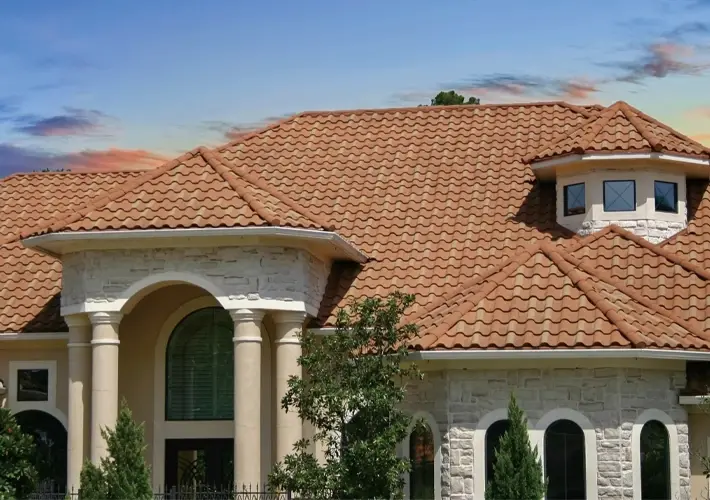
Installation and Maintenance Guide
Installation and Maintenance Guide
Surface Preparation: Ensure roof frame is clean and dry.
Underlayment Installation: Lay waterproof membrane.
Starter Strip Fixing: Begin from the bottom edge.
Tile Placement: Interlock and fix each tile using screws.
Ridge and Edge Finishing: Install ridge caps and side flashings.
Inspection: Check for tightness and alignment.
Maintenance Tips
- Inspect roof annually for debris and minor damage.
- Clean with water to remove dust or leaves.
- Avoid high-pressure washing that may dislodge stone chips.
- Replace damaged tiles promptly.
Why Choose a Chinese Stone Coated Metal Roof Tile Manufacturer
China has become a global hub for stone-coated metal roofing production, offering high-quality products at competitive prices.
Key advantages of partnering with a Chinese factory include:
- Advanced production equipment and technology
- Strict quality control systems
- Wide color and profile selection
- Customization options for OEM/ODM
- Efficient logistics and export services
As a professional stone-coated roof tile manufacturer and supplier in China, we focus on delivering durable, cost-effective, and aesthetically appealing roofing materials suitable for all types of projects—from residential villas to large-scale commercial developments.
Conclusion
Stone-coated metal roof tiles represent the perfect blend of beauty, strength, and sustainability. They are lightweight yet robust, stylish yet long-lasting, and cost-effective in the long run. Whether you are building a new house, renovating an old one, or managing a large commercial project, these tiles offer superior protection and elegance that traditional materials simply cannot match.
With technological advancements and growing global demand, stone-coated metal roof tiles will continue to shape the future of roofing—delivering unmatched value, durability, and design versatility.
If you are looking for a reliable stone-coated roof tile manufacturer and exporter in China, feel free to contact our factory.
We provide high-quality products, professional export support, and customized solutions to meet the needs of your market.


